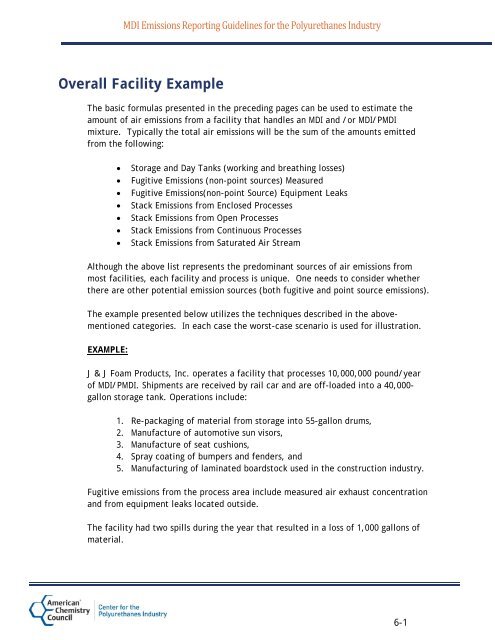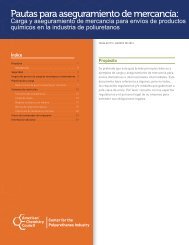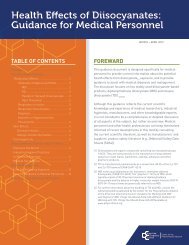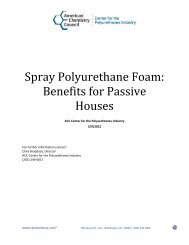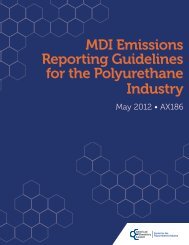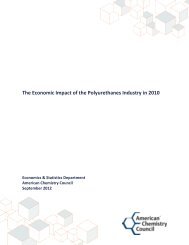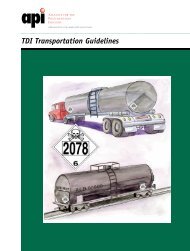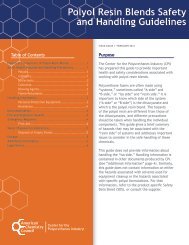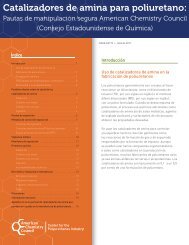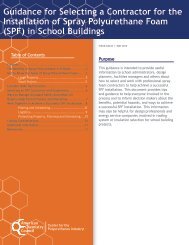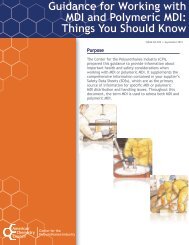MDI Emissions Reporting Guidelines for the ... - Polyurethanes
MDI Emissions Reporting Guidelines for the ... - Polyurethanes
MDI Emissions Reporting Guidelines for the ... - Polyurethanes
You also want an ePaper? Increase the reach of your titles
YUMPU automatically turns print PDFs into web optimized ePapers that Google loves.
<strong>MDI</strong> <strong>Emissions</strong> <strong>Reporting</strong> <strong>Guidelines</strong> <strong>for</strong> <strong>the</strong> <strong>Polyurethanes</strong> Industry<br />
Overall Facility Example<br />
The basic <strong>for</strong>mulas presented in <strong>the</strong> preceding pages can be used to estimate <strong>the</strong><br />
amount of air emissions from a facility that handles an <strong>MDI</strong> and /or <strong>MDI</strong>/P<strong>MDI</strong><br />
mixture. Typically <strong>the</strong> total air emissions will be <strong>the</strong> sum of <strong>the</strong> amounts emitted<br />
from <strong>the</strong> following:<br />
Storage and Day Tanks (working and breathing losses)<br />
Fugitive <strong>Emissions</strong> (non-point sources) Measured<br />
Fugitive <strong>Emissions</strong>(non-point Source) Equipment Leaks<br />
Stack <strong>Emissions</strong> from Enclosed Processes<br />
Stack <strong>Emissions</strong> from Open Processes<br />
Stack <strong>Emissions</strong> from Continuous Processes<br />
Stack <strong>Emissions</strong> from Saturated Air Stream<br />
Although <strong>the</strong> above list represents <strong>the</strong> predominant sources of air emissions from<br />
most facilities, each facility and process is unique. One needs to consider whe<strong>the</strong>r<br />
<strong>the</strong>re are o<strong>the</strong>r potential emission sources (both fugitive and point source emissions).<br />
The example presented below utilizes <strong>the</strong> techniques described in <strong>the</strong> abovementioned<br />
categories. In each case <strong>the</strong> worst-case scenario is used <strong>for</strong> illustration.<br />
EXAMPLE:<br />
J & J Foam Products, Inc. operates a facility that processes 10,000,000 pound/year<br />
of <strong>MDI</strong>/P<strong>MDI</strong>. Shipments are received by rail car and are off-loaded into a 40,000gallon<br />
storage tank. Operations include:<br />
1. Re-packaging of material from storage into 55-gallon drums,<br />
2. Manufacture of automotive sun visors,<br />
3. Manufacture of seat cushions,<br />
4. Spray coating of bumpers and fenders, and<br />
5. Manufacturing of laminated boardstock used in <strong>the</strong> construction industry.<br />
Fugitive emissions from <strong>the</strong> process area include measured air exhaust concentration<br />
and from equipment leaks located outside.<br />
The facility had two spills during <strong>the</strong> year that resulted in a loss of 1,000 gallons of<br />
material.<br />
6-1


